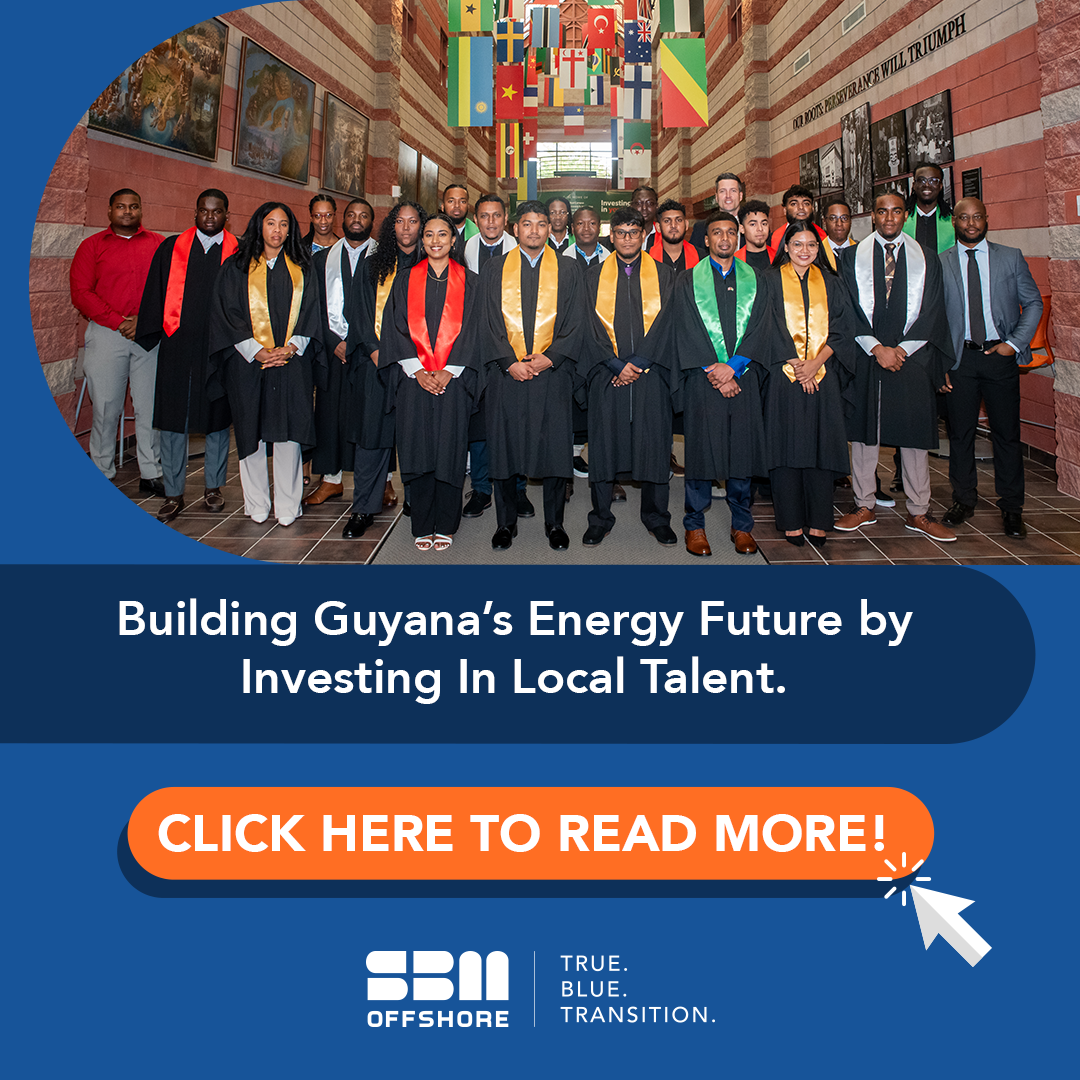On May 10, 2015, ExxonMobil and its partners Hess and CNOOC made a momentous discovery, launching a lucrative oil-fuelled journey that has amazed the world. Just about three miles under the seabed in the Stabroek Block, Exxon and its partners uncovered 290 feet of hydrocarbons at Liza-1.
“Very few companies could have drilled this well given a host of complexities and difficulties. The commercial risk was as high as our chance of success was low. But our technical team stood its ground. They had the guts to see it through,” said Hunter Farris, Senior Vice President for Deepwater at ExxonMobil Upstream Company.
For many years, Guyana had yielded poor exploration results. But that changed in a groundbreaking way. “On May 10, 2015, their efforts hit pay dirt. We struck big – very, very big. More than three miles beneath the seabed, we found substantial amounts of hydrocarbons,” Farris said.
ExxonMobil and its co-venturers achieved First Oil on December 19, 2019 in the Liza Phase 1 Development, operating the Liza Destiny Floating Production and Offloading (FPSO) vessel built by SBM Offshore. This was followed by the Liza Phase 2 with the Liza Unity FPSO, which arrived in February 2022.
The Prosperity FPSO arrived in April 2023 to develop the Payara field. Close to 10 years later, on April 16, 2025, ExxonMobil announced the arrival of the ONE GUYANA FPSO to operate in the Yellowtail Development. Hess CEO John Hess said the two additional vessels in 2026 and 2027 will tap nearly half of the Stabroek Block’s 11.6-billion-barrel reserve.
“Like a race car that blazes from zero to 60 in just a few seconds, Guyana’s oil industry has ramped up – and ramped up safely, I’ll add – from zero barrels to 650,000 per day in the five-and-a-half years since we started. That’s really fast. And it’s not stopping anytime soon,” said Farris.

ExxonMobil has made over 40 discoveries in the Stabroek Block since 2015.
Just last year, ExxonMobil drilled eight successful exploration and appraisal wells in the Stabroek Block with just one unsuccessful well. Five drill ships will continue exploration, appraisal, and development activities this year.
On November 13, 2024, ExxonMobil Guyana and its Stabroek block partners announced they reached 500 million barrels of oil produced from Guyana’s offshore Stabroek Block. They have committed almost USD55 billion to develop projects on Guyana’s offshore Stabroek Block.
Plans are in place to grow production capacity to more than 1.3 million barrels of oil per day by the end of 2027 when the consortium anticipates having all six projects up and running offshore.
Guyana: 10 years later
The Yellowtail project will make Guyana the world’s leading per capita oil producer. Already, the country is considered the world’s fastest-growing economy.
According to the International Monetary Fund (IMF), Guyana’s economic transformation is advancing strongly and broadening in scale. “Rapidly expanding oil production, strong non-oil output, and large-scale public infrastructure investment supported the highest real GDP growth rate in the world, averaging 47 percent per year since 2022,” the IMF stated in a press release.
According to the IMF, the economic outlook remains highly favorable, with the economy projected to grow an average of 14% per year over the next five years, driven by oil production and strong non-oil GDP growth.
The 2025 Budget was the largest ever at USD2.4 billion (GYD1.382 trillion), with oil revenue to fund 37 percent. In 2024, the Natural Resource Fund recorded receipts of USD2.57 billion (GYD536.1 billion). That year, the USD1.586 billion (GYD240.6 billion) withdrawal contributed 29% to the budget.
The Guyana Government has undertaken countrywide infrastructural and housing development projects, among other national development ventures. It also gave every adult Guyanese who had attained the age of 18 by January 1, 2024, the sum of approximately USD478 (GYD100,000) from the country’s oil wealth, among other financial initiatives.
The nation has also experienced a construction boom in recent years, and the demand for STEM and TVET-trained Guyanese is growing as the country tries to meet the expanding needs of the labor force.
Rystad Energy projected that Guyana would receive USD 9.2 billion in revenue from oil sales and royalties in 2030 with the expansion of production and a rebound in prices from the pandemic era of the early 2000s. The country received USD155 million after its first year of production.
The Production Sharing Agreement allows oil companies to take up to 75% of annual production revenue to recover expenses and then split the remainder 50/50 with the government. Guyana also gets a quarterly royalty payment of 2% of all crude produced and sold.
Rystad Energy’s projection is based on a long-term oil price assumption of USD70 per barrel of Brent crude, showing overall revenue from oil in 2030 amounting to USD32 billion.






